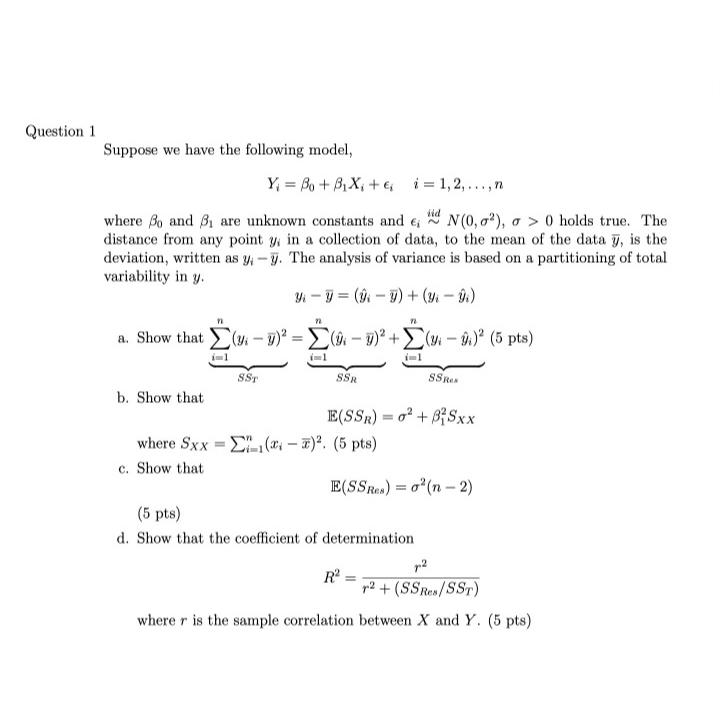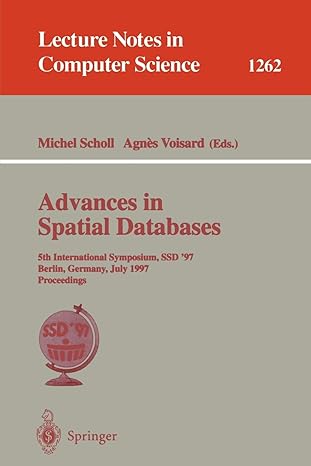Answered step by step
Verified Expert Solution
Question
1 Approved Answer
Question 1 Suppose we have the following model, Y_(i)=beta _(0)+beta _(1)x_(i)+epsi lon_(i),i=1,2,dots,n where beta _(0) and beta _(1) are unknown constants and epsi lon_(i)^(id)N(0,sigma
Question 1\ Suppose we have the following model,\
Y_(i)=\\\\beta _(0)+\\\\beta _(1)x_(i)+\\\\epsi lon_(i),i=1,2,dots,n\ where
\\\\beta _(0)and
\\\\beta _(1)are unknown constants and
\\\\epsi lon_(i)^(id)N(0,\\\\sigma ^(2)),\\\\sigma >0holds true. The distance from any point
y_(i)in a collection of data, to the mean of the data
/bar (y), is the deviation, written as
y_(i)(-)/(b)ar (y). The analysis of variance is based on a partitioning of total variability in
y.\
y_(i)(-)/(b)ar (y)=(hat(y)_(i)-(/bar (y)))+(y_(i)-hat(y)_(i))\ a. Show that
ubrace(\\\\sum_(i=1)^n (y_(i)-(/bar (y)))^(2)ubrace)_(SS_(T))=ubrace(\\\\sum_(i=1)^n (hat(y)_(i)-(/bar (y)))^(2)ubrace)_(SS_(R))+ubrace(\\\\sum_(i=1)^n (y_(i)-hat(y)_(i))^(2)ubrace)_(SS_(Res ))(5pts)\ b. Show that\
E(SS_(R))=\\\\sigma ^(2)+\\\\beta _(1)^(2)S_(xx)\ where
S_(xx)=\\\\sum_(i=1)^n (x_(i)-(\\\\bar{x} ))^(2)*(5pts)\ c. Show that\
E(SS_(Res ))=\\\\sigma ^(2)(n-2)\ (5 pts)\ d. Show that the coefficient of determination\
R^(2)=(r^(2))/(r^(2)+(S(S_(Res ))/(S)S_(T)))\ where
ris the sample correlation between
xand
Y. (5 pts)

Step by Step Solution
There are 3 Steps involved in it
Step: 1

Get Instant Access to Expert-Tailored Solutions
See step-by-step solutions with expert insights and AI powered tools for academic success
Step: 2

Step: 3

Ace Your Homework with AI
Get the answers you need in no time with our AI-driven, step-by-step assistance
Get Started


